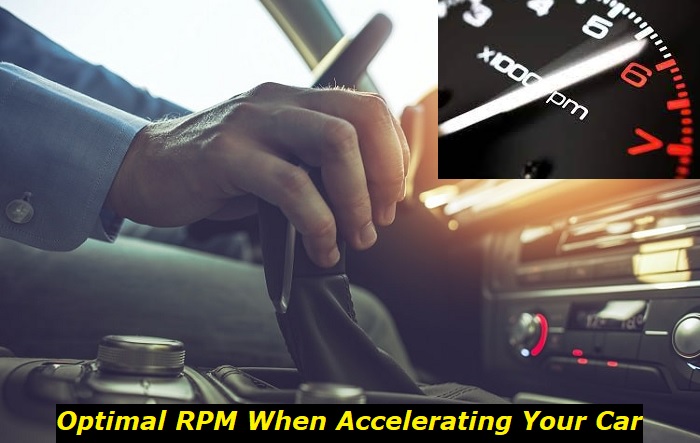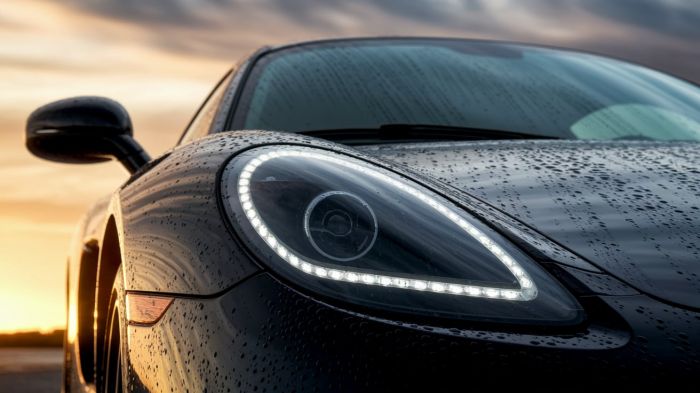Driving styles have always been debatable ground. Someone insists that you should accelerate as fast as possible and then quickly set the engine to the optimal RPM range. Other experts say that slow acceleration is safer for the engine and better for fuel consumption. They all may be right and wrong because there are different engines and various requirements.
Engine use tips highlights
- Level of importance:important
- When done:driving the vehicle, maintaining the engine
- Cost of mistake:$250 - $350
- How to avoid:read advice, read driver's manual
- Consequences:bad efficiency, shorter engine lifespan, engine problems
- DIY solutions:possible

What's the average optimal RPM when accelerating?
It's hard to talk about average RPM because this may be totally different for various engines. In this case, we should distinguish between at least four types of engines: diesel, non-turbo big-displacement units, non-turbo small-displacement powerplants, and turbocharged gasoline engines. All of them will have their own requirements.
Also, the ideal RPM will depend on several other factors such as engine technologies, overall power and torque, and also the RPMs for peak torque and power. You may find this information in the detailed specs of your engine but be careful - the peak power and peak-torque RPMs are not the optimal ones for acceleration or for driving.
Here's what we can tell you about all these types of engines:
- Small-displacement gasoline non-turbo engines. They will be OK to drive at the range of 1600 - 2200 RPM and to accelerate in the range of 2000 - 2500 RPM. This will apply to most small 4-cylinder and also some 6-cylinder engines.
- Big-displacement gasoline non-turbo engines. These ones may need lower RPM to function efficiently and safely. They will be OK with driving at 1500-1800 RPM and accelerating at 1800-2400 RPM. All engines with more than 3 liters of displacement are considered big now.
- Gasoline turbocharged engines. These ones need higher RPMs to work more efficiently and to apply all the advantages of having a turbocharger. They will be OK when you drive them at 2000-2300 RPM and accelerate in the range of 2200-2800 RPM.
- Diesel engines. Although high RPMs don't harm diesel engines, you will want to catch higher torque at lower RPMs and drive your vehicle more efficiently. You may drive at 1200-1600 RPM and accelerate at the range of up to 2000 RPM.
As you see, diesel engines require much lower rotations to function efficiently. This allows them to burn less fuel and be significantly more economical than petrol engines with the same torque and power specs. Also, bigger gas engines are more like diesel powerplants in terms of their optimal RPM.
But most modern vehicles in America are equipped with small-displacement engines with or without a turbo. So, on average, you should get used to driving at more or less 2000 RPM and accelerate at up to 2500-2800 RPM depending on the type of engine in your car.
What happens when you accelerate at low or high RPM?
Now, we should understand why keeping your engine in a certain range of rotations per minute is important. It's not only about fuel economy but also about the lifespan of your engine.
When you accelerate your car, the engine is loaded more than usual. It needs more fuel, better lubrication, and cooling, and it also needs to produce much more power than usual. It means the engine will wear much more during acceleration than during average calm driving with a constant speed.
Here's what happens if you accelerate at low RPM:
- the engine gets a lot of load trying to cope with the acceleration - this may cause intensive wear;
- the cooling system is not that efficient because the pumping of coolant directly depends on the RPM;
- the lubrication is not really efficient - your oil pump also depends on RPM;
- excessive vibration may cause micro damage in the cylinder block;
- excess of fuel may also cause detonation in the cylinders and damage your engine even worse.
These are the usual things that will happen with your gas engine if you try to accelerate it at 1200-1400 RPM after sticking to a certain high gear. For some small-displacement engines, this may cause immediate problems with piston rings. After some time, these engines will start burning oil and you will have to repair them. Otherwise, the engine may die much earlier than you expect.
Here is what may happen if you accelerate at a high RPM:
- although the lubrication is better, the oil may be too thin because of excessive heat;
- the cooling system may not cope with the amount of heat and some parts of the engine will overheat;
- excessive friction will produce more heat in the cylinder block and may damage it;
- you will spend much more fuel than you would spend normally;
- engine vibration will become uncontrollable and may damage an old or high-mileage engine;
- the exhaust system will burn faster because of too much heat released by the engine.
So, it's not much better than accelerating at low RPM. But there are some engines that are ready for higher RPM. Sports engines are OK to rotate up to 5500-6500 RPM when accelerating. They will still lose some life expectancy, but they will obviously lubricate and cool normally. Though, in mass-produced cars, such engines are almost never installed.
You may see that both too low and too high RPM are bad for your engine. These conditions may kill the powerplant slowly or quickly depending on its age and overall quality.
What's better for fuel economy - slow or fast acceleration?
You may experiment a little to find the answer. In your vehicle, you most likely have the trip computer. One of the sections of this computer shows the immediate fuel consumption. It may show it in MPG or liters per miles or per kilometers depending on the type of your car and location.
So, turn this feature on and keep it on your dashboard. Then try accelerating at 1200-1700 RPM and see what it shows. Your logic may insist that the consumption must be improved because engine rotations are lower. But to keep the engine alive, the ECU will pump up more fuel to the combustion chambers. And eventually, the immediate consumption will be quite high.
Then accelerate in the range of 3000-3500 RPM and see what the immediate consumption meter shows. You will be shocked by the results. Even though this acceleration will take less time, it will obviously take more fuel.
After that, try accelerating at optimal RPM for your engine using all the information that you have in this article. You will see that this is the most optimal range and it takes less fuel. You should always balance between too low and too high RPM.
But of course, sometimes, we need to take the RPM higher to accelerate faster. This may be needed when we overtake some other car on the road or need faster acceleration to avoid a collision. If this is the case, forget about fuel consumption and just press that pedal to the metal.
What type of acceleration is better for your engine's lifespan?
Most drivers want to drive their vehicles for lots of miles without dealing with common problems and expensive repairs. So, they are concerned with driving styles that are better for their engines.
Our logic says that low RPM is better because the engine doesn't vibrate, doesn't overheat, and works calmly. But it's not true because too low RPM can cause poor lubrication, bad cooling, the detonation of fuel in cylinders, bad loads, and engine damage. Also, the exhaust system will clog faster if you don't ever go above 2500 RPM.
It's also obvious that too high RPMs will damage the engine even worse. Overheating and excessive vibrations are two of the most obvious factors to worry about.
So, for your engine's better longevity, you should drive your vehicle in the range of optimal RPMs. But sometimes it's OK to make RPMs higher. For example, when you are driving on highways in a gasoline car, it's quite OK to drive it at 3000-3500 RPM for 4-cylinder or 3-cylinder engines and up to 3000 RPM for bigger engines.
Final thoughts
You may experiment and find the best driving style for your vehicle. But keep in mind that always driving at low RPM is not an option. This will destroy your engine maybe even faster than driving at high RPM. Find the golden middle to avoid engine damage and bad gas mileage.
You may consult the driver's manual or even speak to mechanics in the dealership of your car brand. This will help you form a certain understanding of what exactly your vehicle need to live longer and burn less fuel.
About the authors
The CarAraC research team is composed of seasoned auto mechanics and automotive industry professionals, including individuals with advanced degrees and certifications in their field. Our team members boast prestigious credentials, reflecting their extensive knowledge and skills. These qualifications include: IMI: Institute of the Motor Industry, ASE-Certified Master Automobile Technicians; Coventry University, Graduate of MA in Automotive Journalism; Politecnico di Torino, Italy, MS Automotive Engineering; Ss. Cyril and Methodius University in Skopje, Mechanical University in Skopje; TOC Automotive College; DHA Suffa University, Department of Mechanical Engineering






Add comment